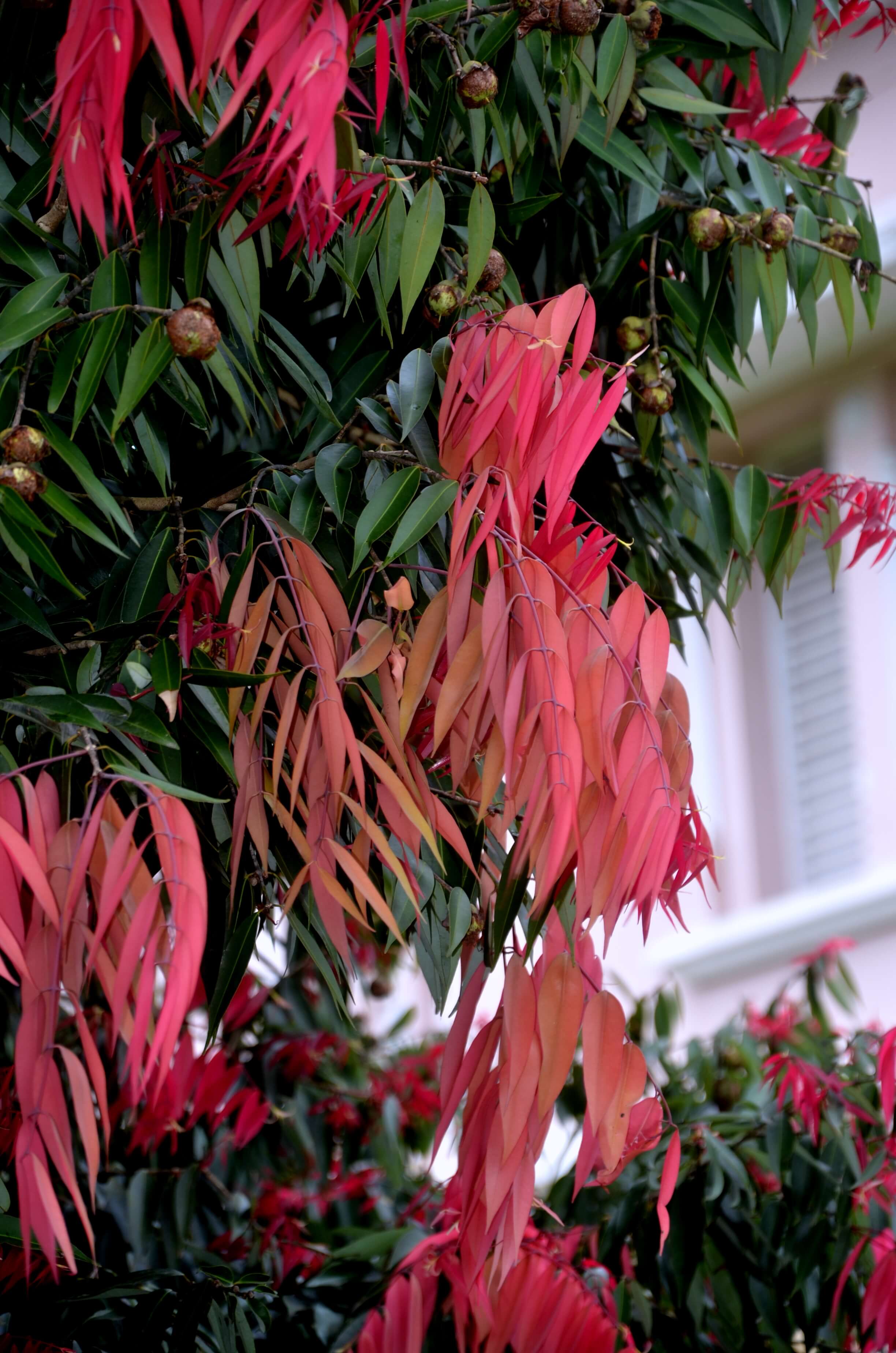
ශාක කුලය - ගුටිෆෙරේ - Guttifererae
නා ගසට ඉතා දීර්ඝ ඉතිහාසයක් ඇත. අපේ රටේ භූමියට ආවේණික වූ නාගස බොහෝ විට වැවීම සිදුවන්නේ විහාර දේවාල ආශ්රිතවයි. දැනට අපේ රටේ ජාතික වෘක්ෂය ලෙසින් නම් කර ඇත්තේ නාගසයි. නා මල ඉතාමත් සුවඳ ය. බුදුන් පිදීම සඳහා නා මල් ගනු ලබන අතර ඉතා මෘදු මලක් ලෙස දැක්වේ. නා මල් රේණු හා පෙති වේළා බෙහෙත් සඳහා භාවිත කරනු ලබයි. ලාංකික කලාකරුවන් නා මල සිතුවම් සඳහා යොදාගෙන ඇත. ඇම්බැක්ක දේවාලයේ ලී කැටයම් අතර නා මල දක්නට පුළුවන. ක්රි.ව. 1986 පෙබරවාරි මස 26 දින ගෙනා යෝජනාවකට අනුව නා ගස අපේ ජාතික වෘක්ෂය බවට පත් විය. ප්රථම වරට 1986 ජූනි 2 දින නා ගසේ චිත්රය ඇතුළත් මුද්දරයක් නිකුත් විය. එය ජාතික වෘක්ෂයකට ගෞරව දැක්වීමකි.
නා යන නම සිංහලයෙන් කියවෙන අතර පාලි භාෂාවෙන් එය හඳුන්වන්නේ නාග යනුවෙන් ය. සංස්කෘත භාෂාවෙන් නාගකේෂර නමි. දමිළ භාෂාවෙන් නාහකරම් ය. ඉංග්රීසි ජාතිකයන් නා ගස හඳුන්වන්නේ අයන්වුඩ් නමින් ය. නා ගසට අයන්වුඩ් කියන්නේ එහි ලීය යකඩයක් මෙන් සවිශක්තිය ඇති නිසා ය. ශ්රී ලංකාවේ බහුල ව වැඩෙන නා ගස වෙනත් රටවල ද දක්නට ඇත. ඉන් කීපයක් නම් ඉන්දියාව, බුරුමය, මලයාව හා අන්දමන් දූපත් ය. විශේෂයෙන් පත්තිනි දේවාල පිහිටි තැන්වල නාගස දැකීමට පුළුවන. නා යන නම නාගයන්ටත් ජලයටත් යෙදේ. නා ගස වර්ග දෙකකින් යුක්ත ය. එය සුදු මල් පිපෙන සාමාන්ය නා ගස් සහ දුර්ලභ වූ 'දිය නා' යන නාගස් වර්ගයයි.
නා ගස බෝවන්නේ නා බීජ මඟින් ය. මෙය ත්රිකෝණාකාර ව වැඩෙන සදාහරිත ශාකයකි. මීටර් 25ත් 30ත් අතර උසකට වැඩෙන නා ගසේ ලීය ඉතාමත් ම ශක්තිමත් ය. මුහුදු මට්ටමේ සිට මීටර් 1000 දක්වා වූ තෙත් වියළි ප්රදේශයේ නා ගස හොඳින් වැඩේ. අධික ශීතල ඇති පළාත්වල නා ගස වර්ධනය නොවේ. පත්ර අග කොටස ඉතාමත් උල් ස්වභාවයෙන් ඇත. නා මල් කොළ කිනිති අතර හටගනී. මල් කැකුළ කුඩා එළබටු ගෙඩියක් තරම් වේ. ළපටි නා දලු තද රතු පාටින් යුක්ත වේ. නා මල් හටගන්නේ අප්රේල් හා මැයි මාසවල දී ය. එහෙත් අතරතුරේ දී මල් පිපේ. නාගොල්ල, නාමැණ්ඩිය, නාගස්පිටිය, නාලන්ද, නාඋල ආදී නම් වලින් හැඟෙන්නේ එම ප්රදේශවල නා ගස් තිබූ බවයි.
ප්රයෝජන
නා මුල්, මල්, පොතු, ඇට, මල් රේණු බේත් සඳහා පාවිච්චියට ගැනේ. විශේෂයෙන් සුවඳ විලවුන් සඳහා නා මල් ප්රයෝජනයට ගනී. රත්පිත් දෝෂ නසන ගතියක් නාවල ඇත. එසේ ම දුරාතීතයේ ඇළ දොළ හරහා ඒදඩු දැමීමේ දී ඒ සඳහා පාවිච්චි කරන ලද්දේ නා ගස් ය. එසේ ම මෛත්රී බුදුරජාණන් වහන්සේ බුද්ධත්වය ලැබීම සඳහා පිට දෙන්නේ නා ගස් සෙවණකටයි. මෙහි අප මුලින් සඳහන් කළ පරිදි ලංකාවේ වැවෙන නා වර්ග දෙක අතුරින් දිය නා නමැති වර්ගය බහුල ව දැකිය හැක්කේ ජාතික නා මල් උයනේ ය. එහි ඇති නා ශාක දියනා වර්ගයට අයත් ය. එහි ඇති විශේෂය වන්නේ කඳේ මුලින් ශාක බිහිවීමයි. මහ ගස දිරා මැරී යන විට ශාක ලොකු වී වැඩීම සිදු වේ.
Type of Genus - Guttifererae
The Iron Wood tree locally known as the Na tree has a very long history. Na trees, which are endemic
to the soil of our country, are mostly grown in the vicinity of temples. At present the Na tree is the
national tree of our country. The Na flower is very fragrant. Na flowers are taken for offering to the
Buddha. Na pollen and petals are used for medicinal purposes. Sri Lankan artists have used it for Na
flower paintings. The Na flower can be seen among the wooden carvings of the Ambakka Devalaya.
According to a resolution brought on February 26, 1986, the Na tree became our national tree. The first
stamp featuring the Na tree was issued on June 2, 1986. It is a tribute to our national tree.
The name Na is the Sinhala name and in Pali it is called Naga. Nagakeshara in Sanskrit. Nahakaram in
Tamil. The English call the Na tree - Ironwood. The Na tree is called Ironwood because its wood is as
strong as iron. The Na tree, which grows abundantly in Sri Lanka, is also found in other countries.
These include India, Burma, Malaya and the Andaman Islands. Na trees can be seen especially in the
places where the Pattini temples are located. The name Na is used for snakes and water. There are two
types of Na tree, the common white flowering Na tree and the rare Diya Na Nagas.
The Na tree is propagated by Na seeds. This is an evergreen plant that grows in a triangular shape. The
Na tree, which grows to a height of 25 to 30 m, is very durable. Na tree grows well in wet and dry areas
up to 1000 m above sea level. Na tree does not grow in areas with extreme cold. The tip of the leaf is
very pointed. Na flowers are formed between the leaf axils. The flower bud is about the size of a small
vegetable. The young Na leaves are dark red. Na flowers appear in April and May. The village names
Nagolla, Namandiya, Nagaspitiya, Nalanda, Naula etc. indicate that there were Na trees in those areas.
Na roots, flowers, bark, seeds, pollen are used for medicine. Na flowers are especially used to produce
perfumes. Nawala has a tendency to kill red blood cells. Na trees were also used for crossing streams in
the distant past. Similarly, the Maitreya Buddha meditated under the Na tree shade to attain
enlightenment. As we mentioned earlier, Diya Na is one of the two most widely grown Na species in
Sri Lanka, found in the National Na Mal Uyana. Its Na plants belong to the genus Diana. Its species is
the first plant to grow on the stem. When the big tree decays, the plants grow bigger and bigger.